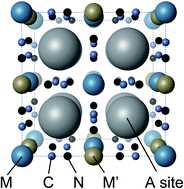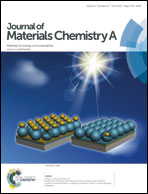EQCM analysis of redox behavior of Prussian blue in a lithium battery electrolyte†
Abstract
Prussian blue (PB) and its analogues (PBAs) have been intensively studied and are now increasingly attractive for battery applications in particular because of their ability to accommodate a wide variety of ions including polyvalent cations. The redox reactions of PB and PBAs are believed to be very fast and reversible. However, it is not always true. In this paper, we clarify the detailed redox behavior of PB in an electrolyte for Li (ion) batteries using an electrochemical quartz crystal microbalance under an Ar atmosphere. We quantitatively report for the first time that the electrochemical adsorption/desorption of PF6− ions occurs in addition to the insertion/extraction of Li+ ions upon the redox reactions of PB. The adsorption of PF6− ions is followed by the extraction of Li+ ions during the oxidation of PB, and the adsorbed PF6− ions hinder the extraction of the Li+ ions. In contrast, the adsorbed PF6− ions do not affect Li+ ion insertion because the PF6− ions are desorbed before the insertion of Li+ ions during the reduction of PB. These results show that for practical applications the size of the framework structure should be selected by comparing the anion size in addition to the cation size.


 Please wait while we load your content...
Please wait while we load your content...